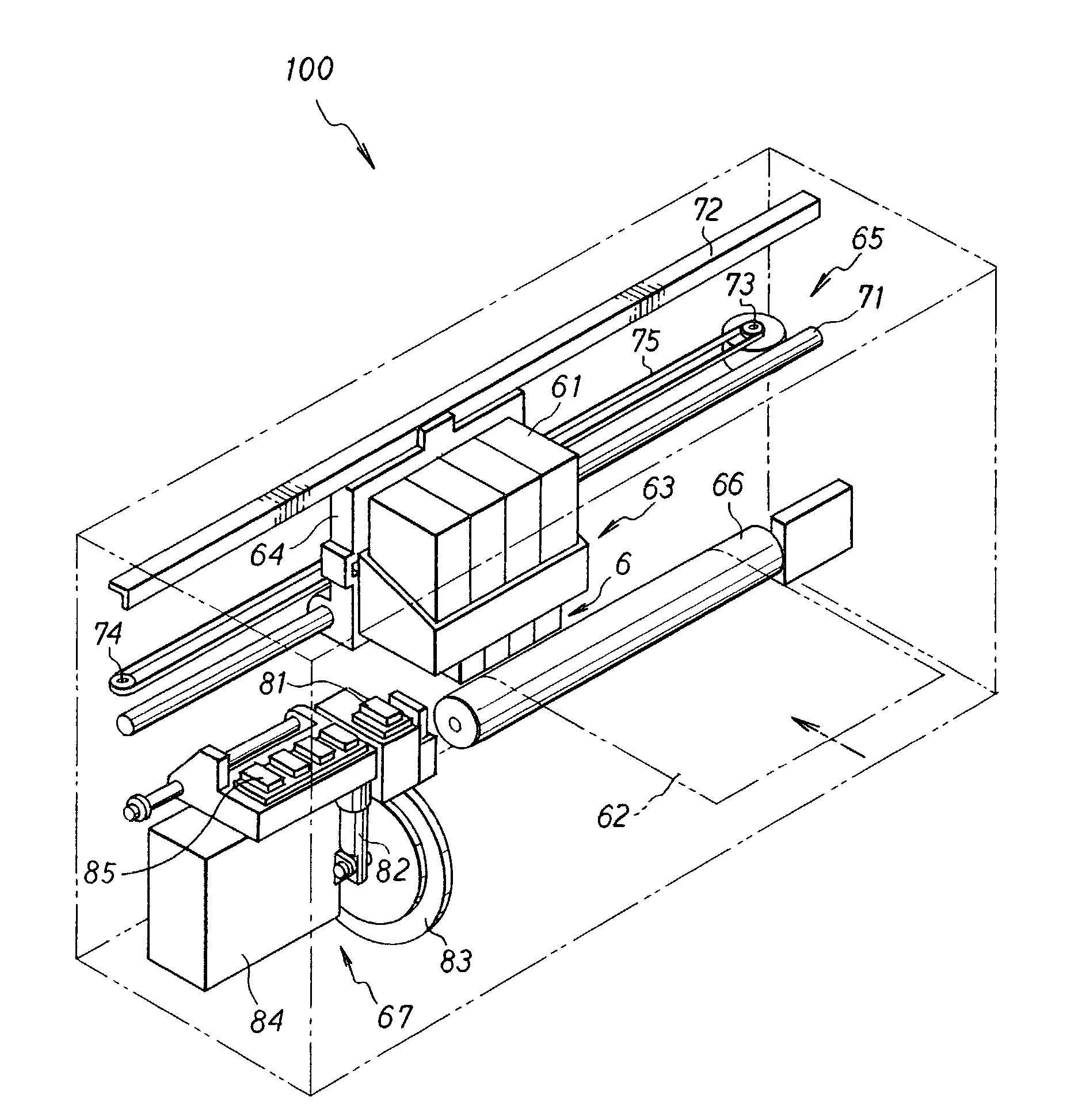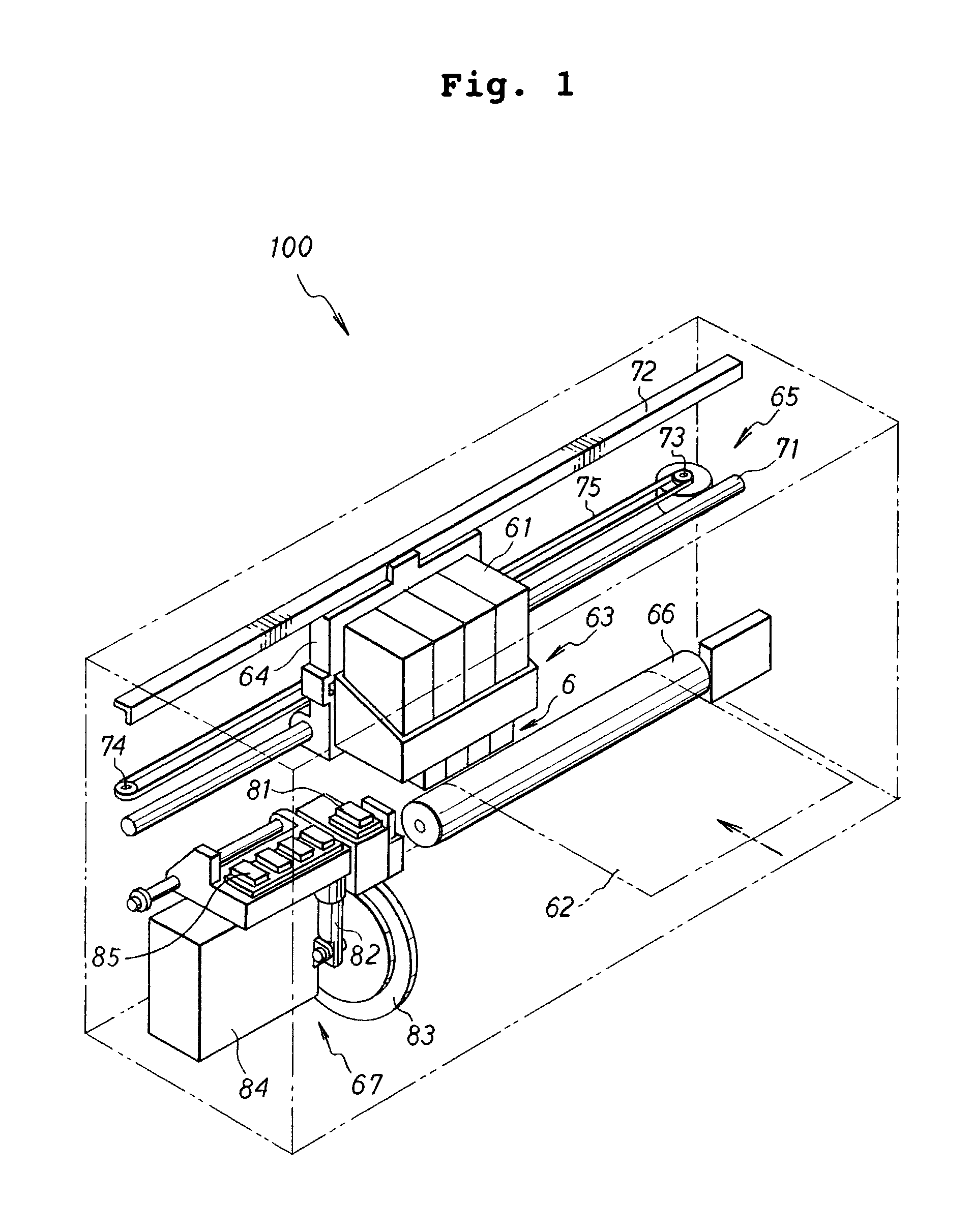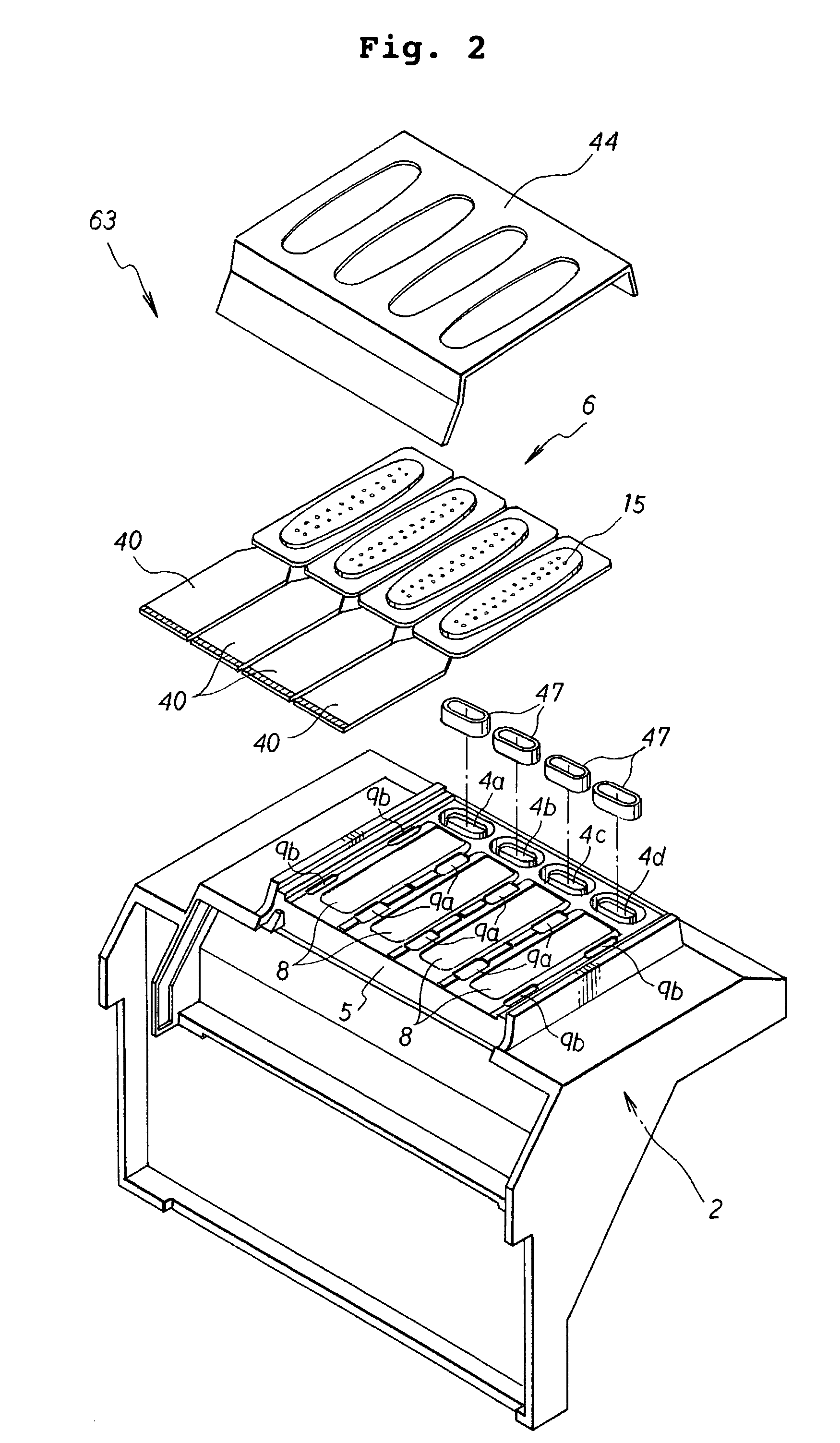Water base ink set for ink-jet recording
a technology of inkjet recording and water base, which is applied in the direction of inks, instruments, printing, etc., can solve the problems of poor feathering effect and color bleed, and achieve the effects of avoiding color bleed, strong spreading force, and relatively high viscosity of color ink
- Summary
- Abstract
- Description
- Claims
- Application Information
AI Technical Summary
Benefits of technology
Problems solved by technology
Method used
Image
Examples
example 1
[0063]The ink compositions, the surface tensions, the viscosities, and the viscosity ratios of inks of Example 1 are shown in Table 1.
[0064]
TABLE 1Example 1BlackYellowPure water51.760.3CAB-O-JET 300 black (carbon black33.3—pigment, produced by Cabot)IJY214H (C.I. Direct Yellow 86, produced—2.7by Daiwa Kasei Co., Ltd.)Triethylene glycol monobutyl ether33Glycerol1224Viscosity (cps)2.03.0Viscosity ratio1.5Surface tension (mN / m)4546
[0065]The inks were prepared, in which the surface tension at 25° C. was not less than 40 mN / m, and the viscosity ratio between the black ink and the color ink (viscosity of the color ink / viscosity of the black ink) was not less than 1.3.
example 2
[0066]The ink compositions, the surface tensions, the viscosities, and the viscosity ratios of inks of Example 2 are shown in Table 2.
[0067]
TABLE 2Example 2BlackYellowPure water46.760.3CAB-O-JET 300 black (carbon black33.3—pigment, produced by Cabot)IJY214H (C.I. Direct Yellow 86, produced—2.7by Daiwa Kasei Co., Ltd.)Triethylene glycol monobutyl ether33Glycerol1734Viscosity (cps)2.33.0Viscosity ratio1.3Surface tension (mN / m)4546
[0068]The inks were prepared, in which the composition of the yellow ink of Example 1 was not changed, the viscosity of the black ink was increased by adjusting the amount of glycerol in the black ink, and the viscosity ratio was not less than 1.3.
examples 3 and 4
[0069]The ink compositions, the surface tensions, the viscosities, and the viscosity ratios of inks of Examples 3 and 4 are shown in Tables 3 and 4.
[0070]
TABLE 3Example 3BlackYellowPure water79.362.3MA-100 (carbon black pigment, produced by5—Mitsubishi Chemical Corporation)Dysperbyk (anionic dispersing agent,0.7—produced by BYK Chemie)IJY214H (C.I. Direct Yellow 86, produced—2.7by Daiwa Kasei Co., Ltd.)Triethylene glycol dimethyl ether55Glycerol1030Viscosity (cps)1.93.0Viscosity ratio1.6Surface tension (mN / m)5554
[0071]
TABLE 4Example 4BlackYellowPure water76.362.3MA-100 (carbon black pigment, produced by5—Mitsubishi Chemical Corporation)Dysperbyk (anionic dispersing agent,0.7—produced by BYK Chemie)IJY214H (C.I. Direct Yellow 86, produced—2.7by Daiwa Kasei Co., Ltd.)Triethylene glycol dimethyl ether55Glycerol1330Viscosity (cps)2.3 3.0Viscosity ratio1.3Surface tension (mN / m)5554
[0072]At first, a pigment mill base to be used for the black ink was prepared in accordance with the followi...
PUM
| Property | Measurement | Unit |
|---|---|---|
| Temperature | aaaaa | aaaaa |
| Percent by mass | aaaaa | aaaaa |
| Electric charge | aaaaa | aaaaa |
Abstract
Description
Claims
Application Information
 Login to View More
Login to View More - R&D
- Intellectual Property
- Life Sciences
- Materials
- Tech Scout
- Unparalleled Data Quality
- Higher Quality Content
- 60% Fewer Hallucinations
Browse by: Latest US Patents, China's latest patents, Technical Efficacy Thesaurus, Application Domain, Technology Topic, Popular Technical Reports.
© 2025 PatSnap. All rights reserved.Legal|Privacy policy|Modern Slavery Act Transparency Statement|Sitemap|About US| Contact US: help@patsnap.com



